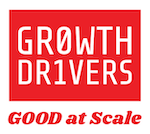Telling Authentic Stories: Why Mini-Docs are the Perfect Solution for Nonprofits
In today’s world, storytelling is everything. Especially for nonprofits, who rely on the power of narrative to connect with donors, volunteers, and the wider community. Every nonprofit has a story to tell—more than that, they have people right now benefiting from their efforts, and sharing those stories can make a world of difference when it comes to attracting new supporters. Yet, many organizations shy away from the idea of creating video content, assuming it’s too complex or too costly. But here’s the truth: producing a powerful mini-documentary for your nonprofit isn’t as difficult—or as expensive—as you might think.
Let’s unpack why mini-docs are an effective and accessible tool for nonprofits to grow awareness and build emotional connections. But first, here’s an example of a recent Mini-Doc we created for Bergen County’s United Way:
The Stories You Already Have Are the Key to Growth
One of the most effective ways for a nonprofit to grow its donor base is by showing the real, human impact of its work. Whether it’s the families being helped, or the communities seeing real change—there are stories happening every single day.
These stories are what draw people in, especially new donors. They want to know their contribution is making a tangible difference. Telling these stories through video allows nonprofits to tap into that emotional connection in a way no annual report or website copy ever could. A mini-documentary allows you to capture raw, authentic moments that resonate with people, inspiring them to act—whether that’s donating, volunteering, or spreading the word.
Mini-Doc Productions Are Less Complicated (And Less Expensive) Than You Think
There’s often a misconception that creating a documentary-style video involves massive crews, complicated lighting setups, and expensive equipment. But that’s not the case. A well-executed mini-doc is more about the story and the people in it, not about fancy gear or a Hollywood-level production.
For example, in the video above, we completed the shoot in a single day. We didn’t have a large crew, no elaborate lighting setups, and certainly no special effects. What we had was the willingness to listen to the stories that needed to be told and capture them in an honest, straightforward way. The result? A video that genuinely moved people.
The reality is, nonprofits don’t need to break the bank to create impactful video content. In fact, by keeping the production simple and streamlined, the focus stays on what matters most: the story itself.
Less Intrusive Productions Create Better Emotional Connections
One of the biggest benefits of using a smaller production team and minimal gear is how it makes the subjects of the video feel. Often, the people benefiting from nonprofit efforts aren’t accustomed to being on camera. They might be uncomfortable or shy about sharing their experiences in front of a large crew or an elaborate setup. And that’s totally understandable.
That’s where the power of a mini-doc really shines. By keeping the production footprint small, you create a more intimate environment. The subjects are more relaxed, allowing their authentic emotions to come through naturally. In this type of setting, you can capture real, unscripted moments that show the depth of the subject’s experience—something a large, highly produced shoot might not be able to achieve.
Familiar Settings Make a Difference
Shooting in a familiar environment—a home, a local community space, or a place where the subject feels comfortable—further helps the process feel more organic. Instead of feeling like they are performing for a big production, they are simply living their lives and sharing their experiences. The end result is a more genuine connection to the audience.
This approach also helps convey the reality of the nonprofit’s work. It’s not about glamourizing the story or staging moments for the camera. It’s about showing the actual impact in real people’s lives, in the places they know and trust. The authenticity of the environment enhances the emotional resonance of the story.
Conclusion: Less is More
For nonprofits looking to attract new donors and grow their awareness, mini-docs are a highly effective tool. They allow you to tell authentic, emotionally charged stories without the need for a huge production budget or complicated logistics. In fact, the less-is-more approach often leads to deeper emotional connections with both the subject and the viewer.
So, if you’re part of a nonprofit and you’ve been hesitant about diving into video content, it’s time to reconsider. You don’t need a blockbuster budget or a massive crew to create something impactful. All you need is a powerful story, a camera, and the willingness to listen.
By embracing the simplicity and authenticity of mini-docs, nonprofits can unlock the full potential of their stories and, in turn, attract the support they need to keep making a difference.
Chris Bradley
CCO - Partner
Chris is our creative leader and head storyteller. He has 25+ years of creative experience with clients such as Feeding America, International Human Rights Arts Festival, Samsung, VW, and Budweiser (to name a few…) His work has been recognized by The Cannes Advertising Festival, Clio Awards, and The Effies.
